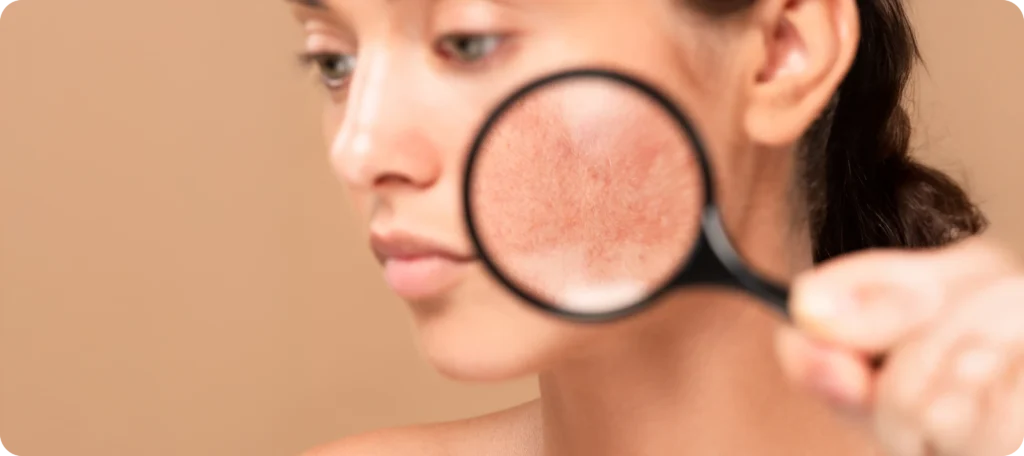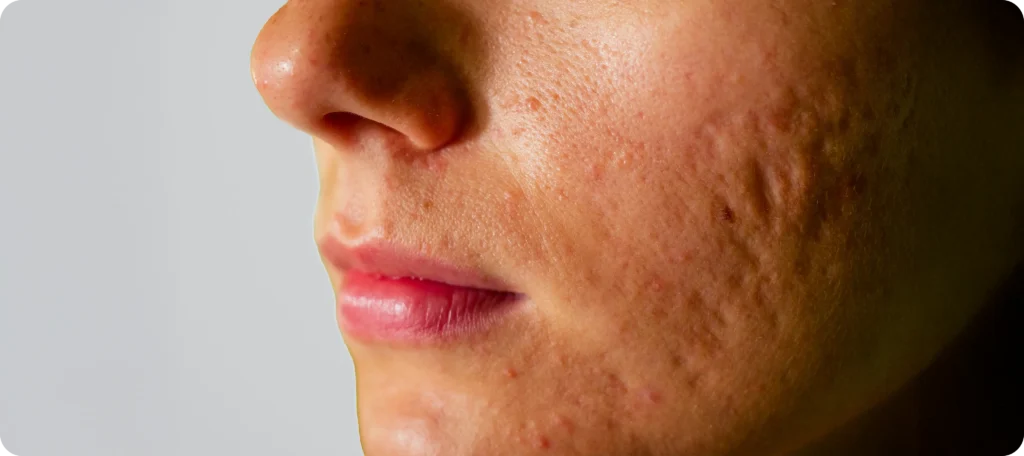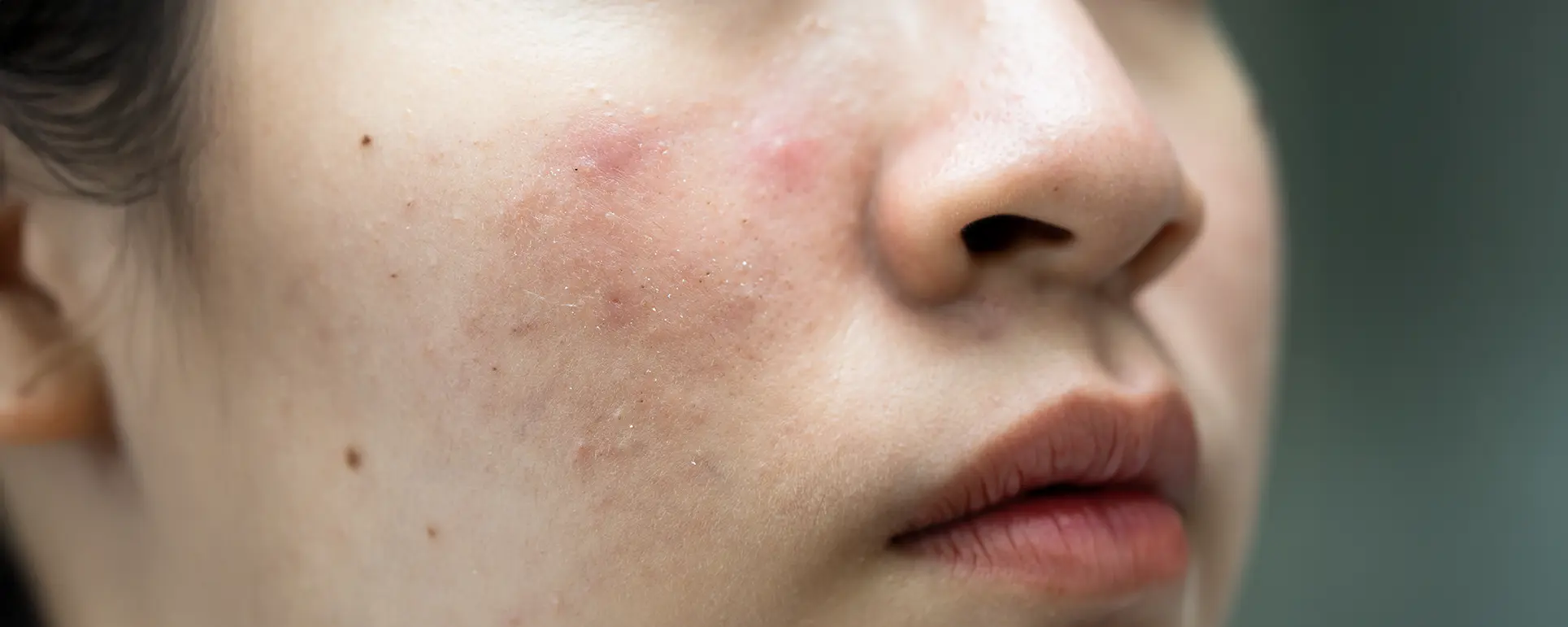Breakouts are one of the most common skin concerns, but they can quickly become a source of frustration, especially when you’re unsure about what you’re dealing with. Is it acne, or could it be something else entirely? The confusion between acne and other skin conditions often leaves people questioning the best way to treat their skin. Acne, with its variety of types and stages, has specific signs that distinguish it from other skin issues, but unfortunately, many of these signs overlap with other conditions. This can lead to misdiagnosis, which not only prevents you from finding the right treatment but can also worsen the condition. It’s important to understand that acne isn’t the only cause of breakouts. Skin conditions such as rosacea, milia, contact dermatitis, or fungal infections can mimic acne symptoms, making it essential to identify what’s causing the breakouts accurately. Knowing the differences between acne and other skin problems can save you time, money, and most importantly, the agony of trying ineffective treatments. In this guide, we’ll break down how you can tell whether you’re facing acne or another type of skin issue, and offer some key steps you can take to manage and treat your skin accordingly.
What Counts as Acne?
Acne is a common skin condition that occurs when hair follicles become clogged with excess oil, dead skin cells, and sometimes bacteria. These clogged follicles can lead to various types of breakouts, such as pimples, blackheads, whiteheads, cysts, and nodules. Acne can appear on many areas of the body, but it is most commonly found on the face, back, chest, and shoulders. It’s important to note that acne doesn’t only affect teenagers’ adults can also experience acne due to a variety of factors.
Common Signs of Acne
If you’ve noticed the following signs on your skin, it’s likely that you are dealing with acne:
• Oily skin with clogged pores: Acne often begins with an overproduction of oil (sebum) from the sebaceous glands in your skin. When the oil combines with dead skin cells, it can clog the pores, creating an ideal environment for acne-causing bacteria.
• Inflamed red bumps or pustules: These are the most recognizable forms of acne. Pimples and pustules are typically raised, tender to the touch, and may have a white or yellow center filled with pus.
• Deep, painful cysts: Cystic acne refers to large, painful lumps that develop deep under the skin. These are often inflamed and can take longer to heal, sometimes leaving scars. Cystic acne is usually more severe and can affect your confidence and self-esteem.
• Breakouts that coincide with hormonal changes: Acne flare-ups are often linked to hormonal changes, such as puberty, menstruation, pregnancy, or the use of certain birth control methods. This is because hormones like androgens stimulate the sebaceous glands, leading to increased oil production and clogged pores.
In addition to these common signs, acne can also be aggravated by stress, diet, and lifestyle choices. If these symptoms sound familiar, it’s a good indicator that you may indeed be dealing with acne. However, it’s always a good idea to visit a dermatologist to get a proper diagnosis and treatment plan, especially if the acne is severe or persistent.
Could It Be Rosacea?

Rosacea is another skin condition that is frequently confused with acne due to some overlapping symptoms. However, unlike acne, rosacea is a chronic inflammatory disorder that doesn’t involve clogged pores. It typically affects the central part of the face, particularly the nose, cheeks, chin, and forehead. Over time, rosacea can cause persistent redness, visible blood vessels, and, in some cases, small red bumps that may resemble acne.
While the symptoms can look similar to acne, rosacea has distinct characteristics that set it apart.
Key Differences Between Acne and Rosacea:
• No Blackheads or Whiteheads: One of the main differences between acne and rosacea is the absence of blackheads or whiteheads in rosacea. Acne typically presents with these types of breakouts due to clogged pores, but rosacea does not involve blocked pores, and its bumps do not have the same appearance as those found in acne.
• Redness that Worsens with Triggers: People with rosacea often experience redness that intensifies with certain triggers. Common triggers include exposure to heat (e.g., sun exposure or hot weather), alcohol consumption, spicy foods, stress, and extreme temperatures. This redness may appear as a flushing or persistent redness in the skin, especially on the central face.
• Visible Tiny Blood Vessels (Telangiectasia): A hallmark of rosacea is the appearance of tiny, visible blood vessels beneath the skin. These are called telangiectasia and can give the skin a blotchy or spider-web-like appearance. This is in contrast to acne, which doesn’t typically cause visible blood vessels.
• Often Flares in Cycles: Rosacea tends to flare up in cycles, with periods of worsening symptoms followed by times of improvement or remission. These flare-ups can last for days to weeks, and during that time, the skin may become more sensitive and prone to redness.
Unlike acne, rosacea doesn’t respond to the typical treatments for acne, such as topical benzoyl peroxide or salicylic acid. Treatment for rosacea typically involves medications that reduce inflammation and address the redness, such as topical or oral antibiotics, and sometimes laser treatments to reduce visible blood vessels. Additionally, managing triggers through lifestyle changes is an essential part of controlling rosacea flare-ups.
If you suspect you may have rosacea, it’s important to visit a dermatologist for a proper diagnosis. Early intervention can help manage the condition and prevent it from worsening over time.
Is It Folliculitis?
Folliculitis is another skin condition that closely resembles acne, making it easy to confuse the two. It occurs when hair follicles become infected or inflamed, usually due to bacteria, yeast, or friction. While folliculitis can look like acne, there are distinct differences, particularly in how it feels. One key indicator of folliculitis is itching, whereas acne generally doesn’t cause the same level of discomfort.
Folliculitis can happen anywhere on the body that has hair, though it is most commonly seen on areas like the scalp, thighs, buttocks, and the back of the neck. It can sometimes be triggered by friction or irritation from tight clothing, sweaty skin, or even shaving.
Key Signs of Folliculitis:
• Small, Red, Pus-Filled Bumps: Folliculitis typically presents as small, red, or pus-filled bumps that resemble pimples, though the bumps may be a bit smaller or more clustered together than typical acne breakouts. They often have a white or yellow center filled with pus, similar to acne pustules, but are usually more superficial.
• Itching or Tenderness: One of the major differences between folliculitis and acne is the sensation it causes. While acne may feel painful or tender, folliculitis is often much itchier. The itching can become quite intense, especially as the follicles become inflamed.
• Occurs on Areas with Hair: Folliculitis is most common in areas of the body where hair grows, as the condition directly affects the hair follicles. It can appear on the scalp, thighs, armpits, or the bikini line. Shaving and friction from clothing are common culprits that can trigger or worsen folliculitis, causing the follicles to become inflamed and irritated.
• Can Follow Shaving or Sweating: If you’ve noticed red bumps after shaving or after a sweaty workout, folliculitis could be the cause. The irritation from shaving or the buildup of sweat and bacteria in the pores can cause the hair follicles to become inflamed, leading to the characteristic bumps. In such cases, folliculitis may be short-lived and resolve once the irritation subsides.
Treatment for Folliculitis:
Unlike acne, which typically responds well to treatments like benzoyl peroxide or salicylic acid, folliculitis often requires more targeted treatments. Because it’s an infection or inflammation of the hair follicles, antibacterial or antifungal medications are more effective in treating the condition. Over-the-counter treatments like hydrocortisone creams or antibacterial washes (such as those containing benzoyl peroxide or chlorhexidine) can be helpful. In more severe cases, a doctor may prescribe oral antibiotics or antifungal medication.
It’s also important to manage any potential triggers. Wearing loose clothing, avoiding shaving irritated skin, and practicing good hygiene can help reduce the frequency and severity of folliculitis. For recurring cases, it’s a good idea to visit a dermatologist for proper treatment and advice.
What About Perioral Dermatitis?

Perioral dermatitis is a skin condition that can often be mistaken for acne due to its similar appearance. It primarily affects the area around the mouth, nose, and sometimes the eyes, causing red bumps, irritation, and inflammation. However, perioral dermatitis typically has a distinct pattern and set of triggers that differentiate it from acne. One of the most common causes of perioral dermatitis is the overuse of topical steroid creams, which can exacerbate the condition.
Unlike acne, which tends to form on the forehead, cheeks, and chin, perioral dermatitis is mostly confined to the areas surrounding the mouth, nose, and sometimes the eyes, forming a pattern that’s easily recognizable to dermatologists.
Key Signs of Perioral Dermatitis:
• Small Red Bumps or Papules: Perioral dermatitis appears as small, red, pimple-like bumps (papules) around the mouth, nose, and eyes. These bumps can be similar in appearance to acne, but they usually lack the whiteheads or blackheads that are characteristic of acne.
• Burning or Itching Sensation: One of the key symptoms of perioral dermatitis is a burning or itching sensation in the affected area. Unlike acne, which may be tender or painful, perioral dermatitis can feel more like an irritation that stings or burns, especially when touched.
• Sparing of the Skin Immediately Next to the Lips: A defining feature of perioral dermatitis is that the skin immediately adjacent to the lips remains unaffected, even though the area around the lips becomes irritated. This is in stark contrast to acne, which often affects the skin directly on or around the lips.
• Triggered by Overuse of Topical Steroids or Certain Cosmetics: One of the most common triggers of perioral dermatitis is the overuse of topical steroids, which are often used to treat conditions like eczema or rosacea. Prolonged use of these steroids can weaken the skin and trigger an inflammatory response that leads to perioral dermatitis. Certain cosmetics, especially those with alcohol or irritating ingredients, can also provoke flare-ups.
Treatment for Perioral Dermatitis:
Unlike acne, which is primarily treated with topical retinoids, benzoyl peroxide, or salicylic acid, perioral dermatitis typically requires a different approach. Topical or oral antibiotics, such as metronidazole or tetracycline, are the most commonly prescribed treatments for perioral dermatitis. These help reduce the inflammation and bacteria associated with the condition.
In some cases, discontinuing the use of topical steroids (under the guidance of a healthcare professional) can significantly improve the symptoms. However, it’s important not to stop using steroid creams abruptly, as this can cause a rebound flare-up. A doctor or dermatologist will guide you through a gradual tapering process if needed.
Additionally, avoiding known triggers, such as certain cosmetics, spicy foods, or stress, can help prevent flare-ups. Using gentle skincare products and maintaining a consistent skincare routine may also be beneficial in managing the condition.
Could It Be Milia?
Milia are tiny, firm, white or yellowish bumps that commonly appear on the skin around the eyes, cheeks, and sometimes the nose or forehead. While they may look like whiteheads, milia are fundamentally different in that they don’t result from clogged pores or excess oil production. Instead, they form when dead skin cells become trapped beneath the surface of the skin, creating small cysts filled with keratin (a protein found in the skin).
Milia are most often seen in babies, but adults can develop them too, especially on the delicate skin around the eyes. Although they may look similar to acne, they have distinct characteristics that make them easy to differentiate.
Identifying Milia:
• Firm, Painless, Dome-Shaped Bumps: Milia are typically small, round, and firm to the touch. They appear as white or yellowish bumps, often with a smooth, dome-like shape. Unlike acne, they are painless and don’t usually become inflamed or infected.
• Common in Babies and Adults: Milia are common in newborns, with some studies estimating that up to 50% of babies will develop them, typically on their faces. However, adults can develop milia as well, particularly on the cheeks, eyelids, and around the eyes. In adults, milia can sometimes form as a result of sun damage, harsh skincare products, or the use of heavy creams that block the pores.
• Not Inflamed or Red: Unlike acne, which often causes redness, inflammation, and sometimes pus-filled bumps, milia don’t exhibit these characteristics. They remain firm and white, with no irritation around them. If your bumps are red or inflamed, they are more likely to be acne or another skin condition.
• Don’t Go Away with Acne Treatments: Milia do not respond to typical acne treatments, such as topical benzoyl peroxide or salicylic acid. This is one of the key differences between milia and acne. Because milia are not caused by clogged pores or excess oil, these acne treatments won’t resolve them. If you’ve tried acne treatments but the bumps remain unchanged, milia could be the cause.
Treatment for Milia:
In most cases, milia resolve on their own within a few weeks or months, especially in babies. However, in adults, milia may persist for a longer period and might require professional extraction. A dermatologist can safely remove milia by gently extracting them using a sterile needle or other specialized tools.
While milia are generally harmless, it’s important to avoid trying to pop or squeeze them yourself, as this can lead to scarring or infection. If you have persistent or bothersome milia, it’s best to seek professional help.
Final Thought: Seeking the Right Diagnosis for Your Skin Condition
If your skin condition isn’t responding to acne treatments or doesn’t quite match typical acne symptoms, it may be time for a proper diagnosis. Conditions like rosacea, folliculitis, or perioral dermatitis often need tailored treatments to clear up effectively.
Feel free to contact us to schedule a consultation at our acne clinic in London our expert dermatologists are here to provide the correct diagnosis and guide you toward the most effective treatment.
References:
- Bowe, W.P. and Shalita, A.R., 2008. Effective over-the-counter acne treatments. Seminars in Cutaneous Medicine and Surgery, 27(3), pp.170–176. Available at: https://pubmed.ncbi.nlm.nih.gov/18786494/
- Two, A.M., Del Rosso, J.Q., Keri, J.E., 2015. Management of rosacea: a review. Journal of Clinical and Aesthetic Dermatology, 8(9), pp.20–26. Available at: https://www.ncbi.nlm.nih.gov/pmc/articles/PMC4600160/
- James, W.D., 2005. Clinical practice. Acne. New England Journal of Medicine, 352(14), pp.1463–1472. Available at: https://www.ncbi.nlm.nih.gov/pmc/articles/PMC7346819/
- Tan, J.K.L. and Bhate, K., 2015. A global perspective on the epidemiology of acne. British Journal of Dermatology, 172(S1), pp.3–12. Available at: https://onlinelibrary.wiley.com/doi/10.1111/bjd.13462
- Nischal, K.C., Nischal, A.A. and Khopkar, U., 2013. Milia: A review and classification. Indian Journal of Dermatology, 58(2), pp.200–202. Available at: https://www.ncbi.nlm.nih.gov/pmc/articles/PMC3632082/
